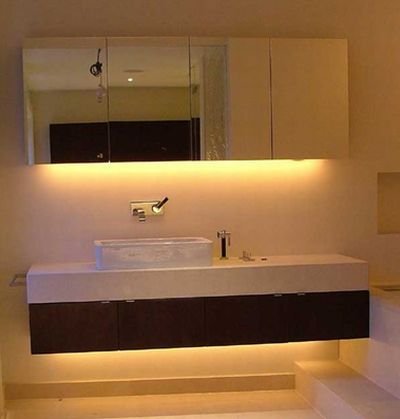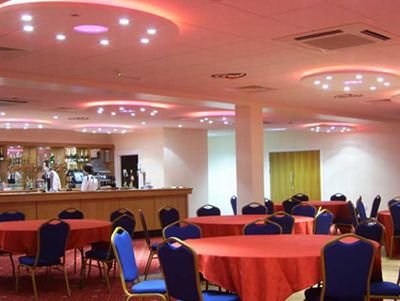Concealed Lighting Techniques
Concealed Lighting is one of the methods of Lighting Systems. Concealed Lighting is usually preferred where dim ambient lighting is necessary to enhance the beauty of the ambiance.

Here are some of the other lighting methods apart from concealed Lighting:
- Direct Lighting
- Indirect Lighting
- Concealed Lighting
- Semi-concealed Lighting
Dining Lighting makes use of Concealed Lighting, Semi-concealed Lighting, Direct and Indirect Lighting System.
Task Lighting makes use of Direct Lighting system.
Underwater Lighting makes use of Diffused Lighting system.
Spot Lighting is complete different system of Lighting but since it has focussed illumination, it can fall under the category of Direct Lighting.
In this article, we are going to discuss the Evolution of the Concept of Concealed Lighting system and also how and where it is used….
Evolution of the concept of Concealed Lighting System
- In the early days of electric lighting the light fittings available tended to be heavy and obtrusive…
- Architects disliked yet another design element in a space and for this reason favoured methods of concealed lighting for ceilings or walls.

- These were described as architectural lighting eliminating the unsightly hardware.
- Concealed lighting can be defined as lighting systems where the sources are concealed from view by the fabric of the building and they are generally thought of as a way of providing indirect lighting to walls or ceilings.
- The light from concealed methods is essentially indirect since the light sources are concealed.
- Since the systems rely on the reflective capacity of those surfaces to which the concealed sources give light, there is an important relationship between the light source itself and the colour, texture and reflective capacity of the surface to be lit.
- In normal lighting for every light there is an individual choke and starter. But for a concealed set up this is not possible as it occupies a lot of space. This is why in concealed lighting there is a common choke…
Latest innovation in flexible concealed xenon
Lighting- Xenon low voltage lighting system
- Xenon lighting opportunities, ranges from a subtle glow to a bright emission.
- It is practical to use in areas such as curved recesses, signage applications, on the the underside of cabinets etc.
- Xenon lighting offers maximum effect when used in domes, ceiling coffers, under shelf pelmets and can even be used for floor lighting.

LED Ribbon Lighting
LED Ribbon Light is a low voltage (12 volt) Super Bright LED lighting in a flexible thin strip that is available in three varieties
- Type A- regular Flexstrip suitable for dry location. Two other types featuring water resistance.
- Type B-has a encapsulated plastic Gel.
- Type C-has a protective Silicone jacket

- This lighting can be used for architectural lighting, sign letter light, concealed lighting perimeter lighting and many other applications.
- Available in red, green, blue, yellow and white colors including RGB that allows to change colors with the optional controller.
- Can be cut to size by at each 3 LED (12V model) intervals at marking points (by electricians) and rejoined by soldering at marked soldering points & consumes power less than 4.8w per meter.
- Length of the shortest functionable unit detachable is 50mm.

- Wall lighting can be successful using concealed slots at the wall to light down the wall, but again the dimensional relationships must be carefully controlled if the wall is not to be bright at the top and dark towards the bottom.
Advantages of Concealed Lighting
- It is quite effective in avoiding the electric shocks.
- One of the important advantage of using concealed lighting system is that the electric wires are not exposed that protect us from getting shocks.
- Since all the wires are concealed, it increases the aesthetic appeal of the place.
Disadvantages of Concealed Lighting
Concealed Lighting has two major disadvantages:
- It is difficult to maintain and repair the Concealed Lighting.
- A major problem that was addressed by concealed wiring system is the spread of fire during accidents…